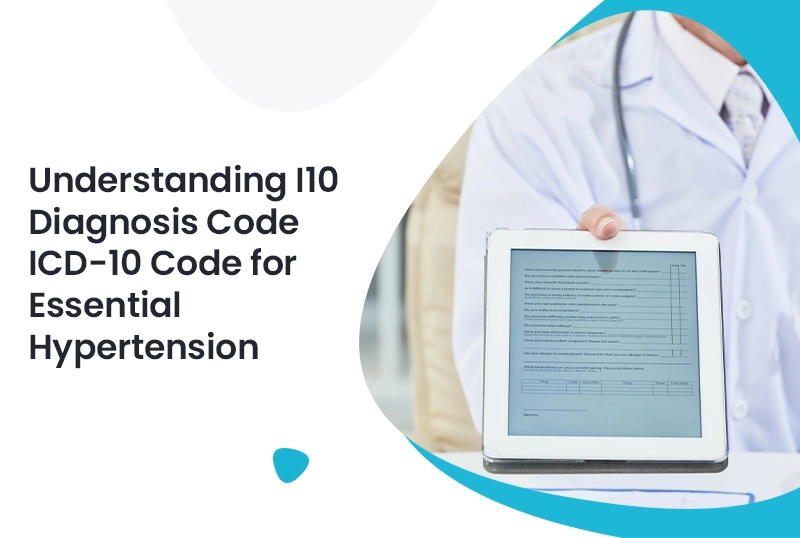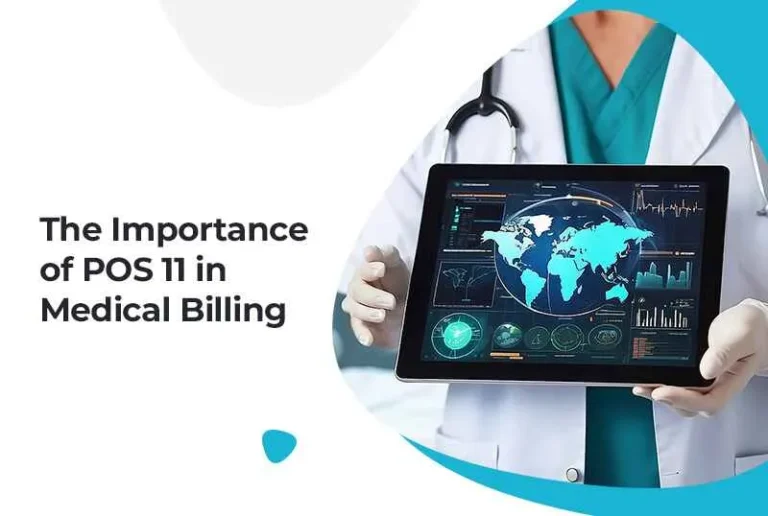Hypertension, commonly known as high blood pressure, is a condition affecting millions globally. The I10 diagnosis code identifies and classifies essential hypertension, which is a type of high blood pressure with no identifiable cause. This code is crucial for proper diagnosis, treatment, and insurance billing.
For healthcare providers, using the correct medical billing service proper application of the I10 diagnosis code ensures accurate documentation and timely reimbursement. Healthcare practices that implement accurate coding benefit from smoother operations and better financial health.
Why the I10 Diagnosis Code is Essential: Key Benefits for Providers and Patients
| Benefit | Why It’s Important |
| Accurate Diagnosis | The I10 diagnosis code ensures that essential hypertension is diagnosed and treated correctly. |
| Efficient Billing | Proper use of this code guarantees efficient billing, preventing errors and delays. |
| Insurance Reimbursement | Using the I10 diagnosis code helps ensure that hypertension treatment is covered by insurance. |
Using the I10 diagnosis code accurately allows healthcare providers to document essential hypertension correctly, ensuring proper care. Proper coding enables healthcare providers to receive reimbursement for their services. Patients benefit from this process as it leads to smoother healthcare experiences and faster access to treatment.
Real-Life Example: The Importance of Correctly Using the I10 Diagnosis Code
Dr. John, a primary care physician, treats numerous patients with hypertension. After a series of blood pressure readings showed consistently high results, he diagnosed one of his patients, Sarah, with essential hypertension.
During her treatment, Dr. John’s office accurately applied the I10 diagnosis code in her medical records. This allowed the practice to receive prompt reimbursement for Sarah’s consultations, medications, and follow-up appointments.
If they had used the wrong code, such as one for a secondary type of hypertension, Sarah’s insurance might have denied the claim, causing delays in her treatment and financial strain on the practice.
This example illustrates how accurate diagnosis, coding, and billing can directly impact both patient care and practice revenue.
Common Mistakes in Using the I10 Diagnosis Code
When dealing with I10 diagnosis code, several mistakes can affect the efficiency of care and reimbursement:
- Misuse of the Code:
You should only use the I10 diagnosis code for essential hypertension. Using it for secondary hypertension or other related conditions can cause billing errors. - Insufficient Documentation:
Healthcare providers must document the patient’s blood pressure readings, symptoms, and treatments properly; otherwise, insurance providers may reject their claims.Thorough documentation is necessary for claim approval. - Failure to Verify Insurance Coverage:
Ensuring the patient’s insurance plan covers treatment for hypertension is vital. Some policies may have exclusions or require prior authorization for certain treatments.
Step-by-Step Guide to Correct Billing for Essential Hypertension
Here’s a simple guide for ensuring correct billing and reimbursement for essential hypertension treatment:
- Accurate Diagnosis and Documentation:
Confirm that the patient’s hypertension is essential (primary) and not secondary (due to another condition). Record all relevant blood pressure readings, comorbidities, and symptoms. - Use the Correct I10 Code:
Apply the I10 diagnosis code to the patient’s medical records for primary hypertension. Ensure it is used in all related claims. - Verify Insurance Coverage:
Always confirm that the patient’s insurance covers treatment for hypertension, and check whether any special requirements or limitations apply. - Submit Claims on Time:
Submit claims promptly and follow up on any issues or delays. Timely submission leads to faster payments and reduces administrative overhead.
Optimizing Billing for Hypertension
| Key Factor | Why It’s Important |
| Revenue Cycle Management | Helps streamline the entire process from diagnosis to reimbursement, ensuring faster payments. |
| Accurate Billing | Correct application of the I10 diagnosis code reduces errors, making billing more efficient. |
| Timely Reimbursement | Optimized revenue cycle management ensures that healthcare providers are paid promptly for hypertension treatment. |
Efficient revenue cycle management healthcare is crucial for healthcare providers to get reimbursed for essential hypertension treatment. By using the I10 diagnosis code correctly, providers ensure smoother claims submission and faster reimbursements. This allows practices to maintain steady cash flow, which is essential for continued operations.
The Role of Credentialing Services in Hypertension Treatment
| Key Service | Why It’s Important |
| Medical Credentialing Services | Ensures healthcare providers are licensed and approved to treat hypertension and other conditions. |
| Insurance Partnerships | Helps establish relationships with insurance companies, ensuring quicker claims processing. |
| Compliance Assurance | Credentialing guarantees that providers are compliant with healthcare standards, ensuring they are eligible for reimbursement. |
Medical credentialing services are essential for healthcare providers treating conditions like essential hypertension. Proper credentialing verifies that a healthcare provider meets the qualifications required by insurance companies, which enables smoother billing and reimbursement processes. This also assures patients that they are receiving care from qualified professionals.
Conclusion: The Importance of the I10 Diagnosis Code in Hypertension Treatment
The I10 diagnosis code is essential for diagnosing and billing for essential hypertension. It ensures that both patients and healthcare providers are on the same page when it comes to treatment and reimbursement. By following best practices in medical billing and coding, healthcare providers can avoid mistakes and ensure that their services are reimbursed efficiently.
For more detailed guidance on ICD-10 coding for hypertension, visit the American Academy of Family Physicians’ official guide on hypertensive disease coding: How to Document and Code for Hypertensive Diseases in ICD-10
FAQs
Q1: How does the I10 diagnosis code impact billing?
The I10 diagnosis code identifies essential hypertension, which is a type of high blood pressure with no known cause.
Q2: What are common mistakes with the I10 diagnosis code?
Common mistakes include misusing the code for other forms of hypertension and inadequate documentation.
Q3: How does revenue cycle management impact hypertension treatment billing?
Revenue cycle management healthcare ensures timely and accurate submission of claims, reducing delays in reimbursement for hypertension treatments.
Q4: Why is medical credentialing important for hypertension treatment?
Healthcare providers gain recognition from insurance companies through medical credentialing services, which smooth the billing and reimbursement process.







